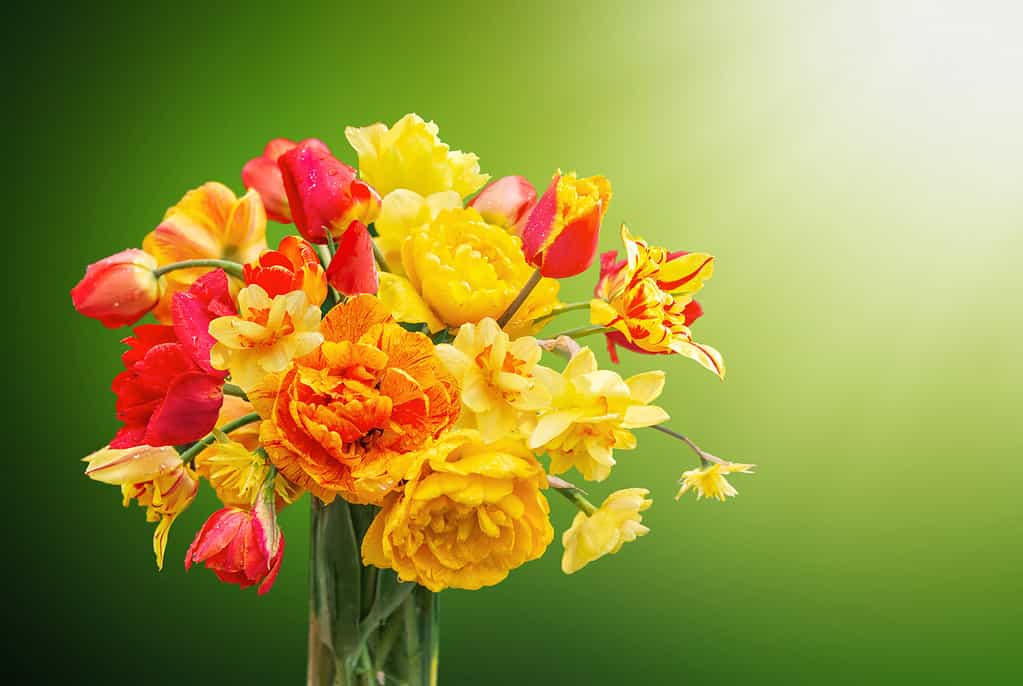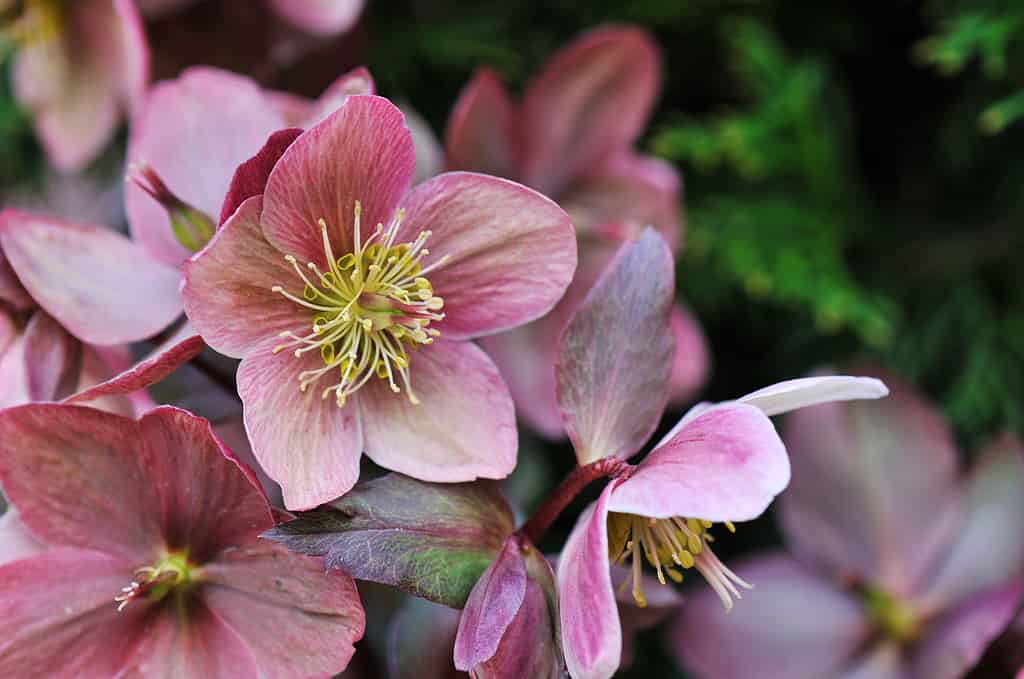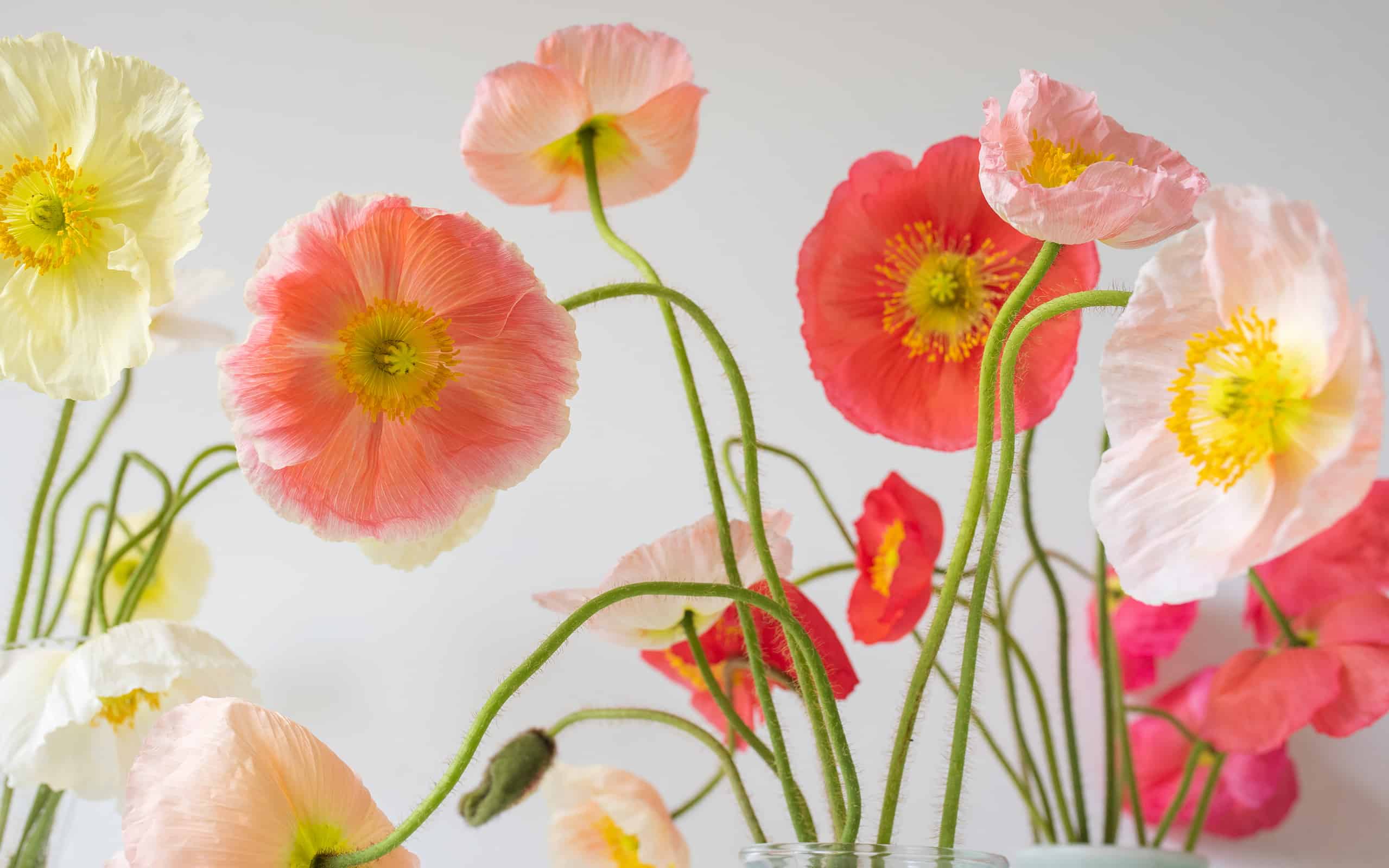Valentine’s Day is fast approaching. It’s one of the busiest times of year for the floral industry (second only to Mother’s Day). Flower shops are bustling with excitement and anticipation for a day about sharing your heart with someone. If you’re looking for fresh flowers for that special Valentine, I’m a florist who will guide you to blooms that go beyond the traditional red rose.
Valentine’s Day is an opportunity to arrange flowers that are unique to each customer, capture the artful singularity of their relationship, and how they spend the day together. And if I’m honest, red roses are unimaginative, expensive, and unfriendly to the environment.
Any florist worth their salt will offer you alternatives that are sure to dazzle your sweetheart, include a personal touch, and won’t cost you a fortune. I’ll share with you a dozen blooms that can outshine a dozen red roses on any romantic date night — plus, I’ll let you in on a bonus alternative. Read on to learn about the 12 best flowers for Valentine’s Day that aren’t red roses!
Amaryllis (Hippeastrum)

The amaryllis is often thought of as a holiday flower, but they’re available as a cut stem around Valentine’s Day.
©goncharovaia/ via Getty Images
The amaryllis is for the bold and beautiful! The blooms are similar in size and shape to a lily but don’t have the intense fragrance. They’re long-lasting as a cut stem and can stand on their own in an arrangement for a minimal, striking look. To avoid looking like Christmas leftovers, opt for pink, a beautiful orange-peach shade, or one of the unusual green varieties.
Anemone (Anemone)

There are types of white anemones that have a green center instead of the more common black center.
©y-studio/ via Getty Images
Not to be confused with the sea creature, the anemone is a showstopper that’s also in season for Valentine’s Day. Its common name is windflower, but most florists will know the flower by its genus, Anemone. With its dark center and the wide range of colors, this bloom is equal parts versatile and beautiful. Red anemones resemble poppies, and they’ll last longer. Ask your florist if they can arrange a mix of jewel-toned anemones with complimentary blooms and foliage to capture a deep, saturated look that’s truly swoon-worthy.
Mimosa (Acacia dealbata)

Mimosa (
Acacia dealbata) is native to Australia and also goes by silver wattle and blue wattle.
©Yuya Kimoto/ via Getty Images
If you’re looking for a Valentine’s gift that says, you are my sunshine, look no further! The variety of blooming Acacia, mimosa, is the perfect flower to brighten up a gray February date night. This winter flowering species has feathery leaves and blossoms that resemble soft beads. It also has a subtle, sweet scent. While unusual, you may be able to call ahead and ask your florist if they can order it ahead of time. Bring home a bunch of mimosa to sit in a vase en masse and you’ll enjoy its sunny glow for up to a week after your Valentine’s Day celebration.
Hydrangea (Hydrangea)

Before the hydrangea bloom peaks, it’ll often be smaller in size and a bright shade of green. Some florists will use these premature hydrangeas, referred to as “mini greens” as a base in arrangements.
©Nguyen Minh Tam/ via Getty Images
The hydrangea’s large, pillowy shape makes for a soft, romantic statement for a cozy Valentine’s evening. They come in a variety of colors and shapes, including blue, an unusual shade found naturally in flowers. The blooms can stand as their own focal flower in a bouquet or can serve as a textural complement in a mixed arrangement. Hydrangeas are easily accessible, whether you shop at your local flower shop or grocery store.
A word of warning: hydrangeas make excellent Valentine’s flowers but they’re thirsty (hence the name containing the Greek root hydra, which refers to water and the water serpent). If not conditioned properly, blooms tend to wilt within a day or two. I recommend following these quick tips, especially if you buy hydrangeas from a grocery store:
- Cut the stems at an angle.
- Place the hydrangeas in hot or boiling water. The hot water will hydrate the blooms faster.
If you do notice your hydrangea starting to wilt, you can follow the same tips. Allow a few hours and your hydrangea should perk back up!
For the Valentine who gardens, consider buying a potted hydrangea from your local nursery or garden center. Come spring and summer, you’ll have the Valentine’s gift that keeps on blooming!
Gerbera Daisy (Gerbera)

The gerbera daisy got its name from German botanist and doctor, Traugott Gerber, who was also a friend of Carl Linnaeus.
©Tramont_ana/ via Getty Images
The gerbera daisy may not be the most elegant flower, but you’ll be hard-pressed to find a more cheerful bloom. Easily accessible, the gerbera daisy comes in some of the brightest hues of pink, yellow, and orange. It’s the perfect Valentine’s flower for a young daughter or to share with a true-blue friend.
Tulip (Tulipa)

Most florists will give you the option of a flower arrangement in a vase or a hand-held bouquet.
©Elena Vilkova/ via Getty Images
Still looking for something classic that isn’t a red rose? Look no further than the tulip. Opt for the romantic red or, for more unusual varieties, look for the stunning parrot tulips or double blooms. You don’t have to travel to Holland to find endless color variations.
Keep it simple and gather a few bunches in a vase or ask your florist if they can arrange a mix of tulips with other blooms and greenery. You can’t go wrong!
And one other thing that makes the tulip the magnificent bloom that it is? It will continue to grow even after it’s been cut! Enjoy a floral arrangement that will evolve over the next few days. Watch the tulips gracefully arc and twist as they open. The tulip is deceivingly common. Bring home this early spring bloomer to show your Valentine the magic of the tulip.
Hyacinth (Hyacinthus)

Hyacinths come from bulbs. They can grow and bloom in water as well as if planted in soil.
©iStock.com/OlgaMiltsova
If you’re looking for a fragrant bouquet, the hyacinth is a strong but quintessentially floral scent that can fill up a whole room. You can bring home a bouquet of soft, pastel-colored hyacinths or choose vibrant shades of purple and hot pink.
Like the hydrangea, the hyacinth can also be found as a potted plant at grocery stores and garden centers around Valentine’s Day. If your local florist sells potted hyacinth, ask to plant the spring bulb in a decorative pot with daffodils or herbs to present a fragrant dish garden to your Valentine.
Ranunculus (Ranunculus)

The ranunculus flower has hollow stems. When a florist uses ranunculus blooms in weddings, often they’ll feed a wire through the stem to reinforce its sturdiness.
©Malkovstock/ via Getty Images
Often mistaken as a small peony, the ranunculus won’t disappoint any Valentine! Part of the buttercup family, the round blossom is made up of densely packed petals that gradually unfurl throughout its vase life. Include them in a larger bouquet of complimentary blooms and texture or a collection of single stems in bud vases that will be the perfect addition to any bedside.
The pale blush shade has become a standard in wedding flowers, but because of its growing popularity, you can find ranunculus at most flower shops. Choose a rich, romantic coral shade or a mix of refreshing summer sorbet: peaches, yellows, and pinks. Whatever color palette, ranunculus meets the romance of the holiday with elegance and whimsy!
Hellebore (Helleborus)

When working with hellebores, a florist can slice the stem lengthwise about two to three inches from the bottom. The slit can help the flower hydrate faster.
©kongxinzhu/ via Getty Images
A winter-blooming flower, the hellebore is an excellent cut stem or addition to your garden. You may also hear it referred to as a lenten rose, but one glance at this striking bloom and you’ll want to tell those red roses to eat their hearts out.
From white and pale pink shades to the dark, moody shades of burgundy, the hellebore elevates any floral arrangement with an artistic touch that’s both seasonal and timeless. Ask your florist to include hellebores in your Valentine’s Day bouquet. It will feel like you’re bringing home a living Dutch master painting.
Orchid (Orchis)

Cymbidium is another type of orchid you might find at a flower shop. They are typically sold as a long stem with 10-15 blooms running along its length.
©Alex Manders/ via Getty Images
Like tulips, orchids are deceivingly ordinary. You can often find phalaenopsis, or moth orchids, at grocery stores. But there’s more than meets the eye when choosing orchids for your Valentine. Did you know that there are more types of orchids than there are types of birds on the planet?
The moth orchid comes in a wide range of stunning colors, so do this florist a favor and avoid the dyed or painted varieties. Present your Valentine with an orchid that’s potted up to create a sleek modern style. This floral design can last up to a month! Otherwise, your florist can include orchid stems for a graceful cascading arrangement. Some flower shops that specialize in tropical plants may offer other types of orchids. Cymbidium, dendrobium, and vanda are all orchids that work well as cut stems and come in myriad vibrant colors. A single stem in a delicate bud vase can be as much of a statement piece as arranging them with complimentary blooms.
Iris (Iris)

Like many of the flowers on this list, you can purchase irises as cut stems in an arrangement or as plants for your garden. Depending on where you live, there might be native varieties that can attract pollinators.
©iStock.com/Gerald G Gantar
The iris is another early spring bloomer. There is something architectural and delicate about this bloom that catches the eye the same way your Valentine first caught yours. The blue-purple varieties you’re most likely to see at flower shops have small accents of bright yellow. They may look like tight buds initially, but they will unfold into their exquisite shapes. Let them stand out in a mixed arrangement of other coordinating flowers and colors.
Icelandic Poppy (Papaver nudicaule)

One trick to help poppies last longer is after they’ve been properly hydrated, singe the end of the stem to lock in the moisture.
©natalie_board/iStock via Getty Images
The final alternative to red roses is the Icelandic poppy. This dreamy bloom is fragile and may not last as long as the other flowers I’ve mentioned. No matter how fleeting, their brightness and whimsical beauty make them a worthwhile gift for your sweetheart. With petals like tissue paper and wily stems that curve like dancers, poppies are stunning, effervescent, and excellent teachers. They show us how to savor the good and beautiful things in the moment—including the love you have on Valentine’s Day.
Bonus: Designer’s Choice

When you next buy flowers from a flower shop, ask what might be in season. Working with nature means you’ll likely get flowers that are higher quality and more reasonably priced.
©Julia Motinova/ via Getty Images
As a bonus alternative to red roses, I recommend leaving it up to the florist. Having worked many Valentine’s Days and arranged countless bouquets and vase arrangements, my best work is for customers who put their trust in me. Give your florist creative freedom and your expectations are likely to be exceeded. Staying open to what’s in season and what might be available locally also means getting the best quality blooms — and discovering some new flowers you may not have seen before.
That doesn’t mean you don’t get a say at all. I recommend that customers unfamiliar with ordering flowers for their Valentine give me the following guidelines:
- Color palette: tell me what color or colors you’d like in the bouquet (or what colors to avoid).
- A favorite flower: let me know if there’s a particular flower you’re looking for. If I don’t currently have it in stock, I might be able to order it or offer similar blooms.
- Budget: even though flowers can get expensive, a quality florist will know how to work with what you can spend and still arrange a gorgeous floral arrangement.
| Summary Table: The Best Valentine’s Day Flowers That Aren’t Red Roses |
|---|
| Amaryllis (Hippeastrum) |
| Anemone (Anemone) |
| Mimosa (Acacia dealbata) |
| Hydrangea (Hydrangea) |
| Gerbera Daisy (Gerbera) |
| Tulip (Tulipa) |
| Hyacinth (Hyacinthus) |
| Ranunculus (Ranunculus) |
| Hellebore (Helleborus) |
| Orchid (Orchis) |
| Iris (Iris) |
| Icelandic Poppy (Papaver nudicaule) |
| Bonus: Designer’s Choice |
Conclusion
However you spend Valentine’s Day — and with whomever you share it — brighten up the wintry season with fresh flowers that outshine red roses!
Thank you for reading! Have some feedback for us? Contact the AZ Animals editorial team.








